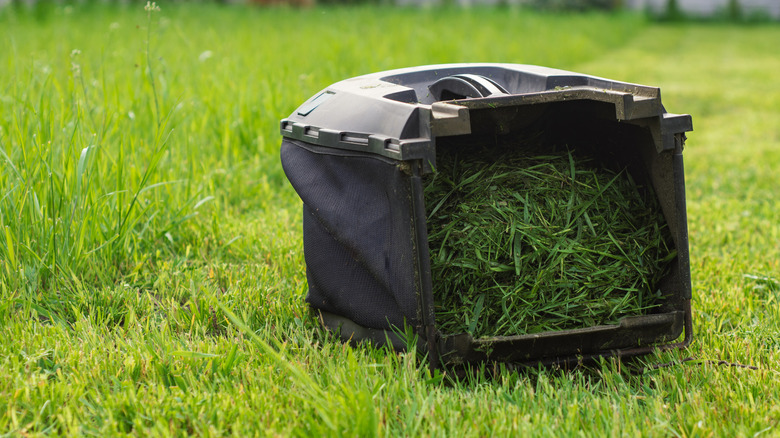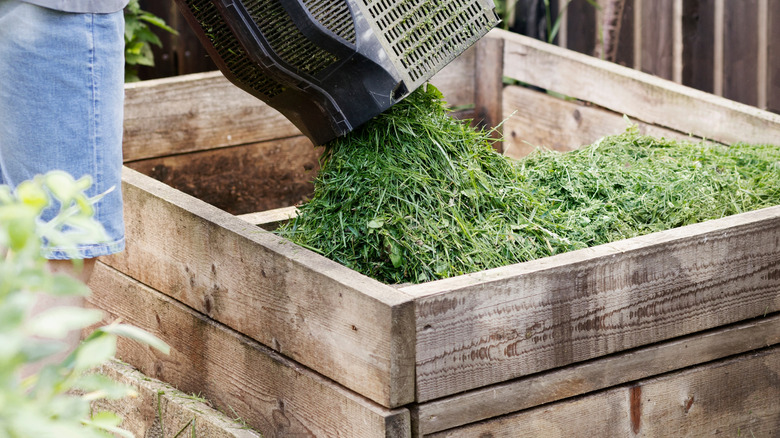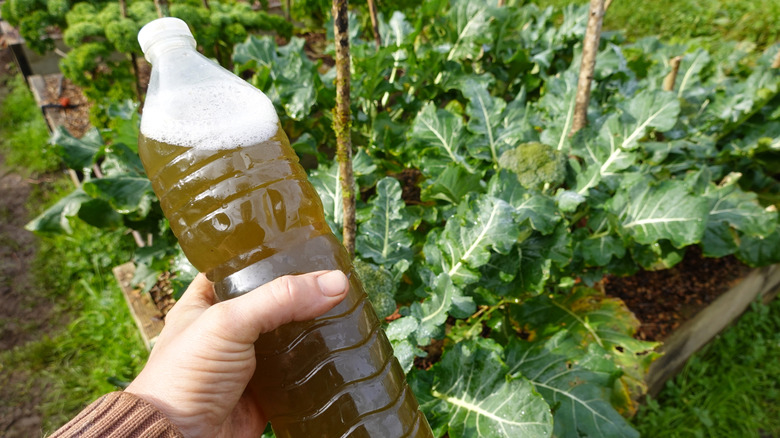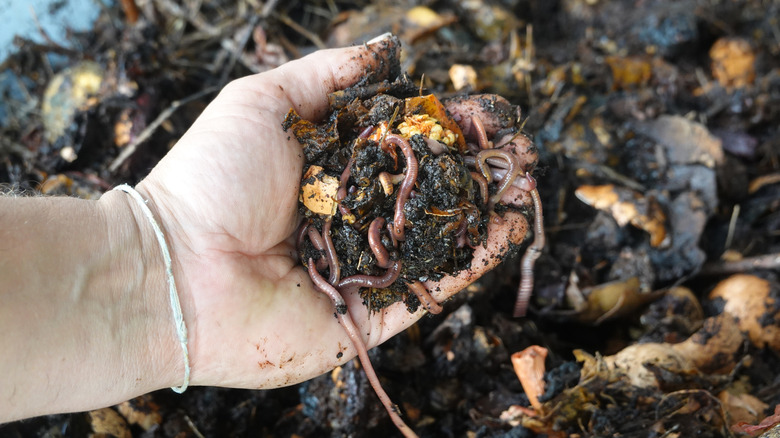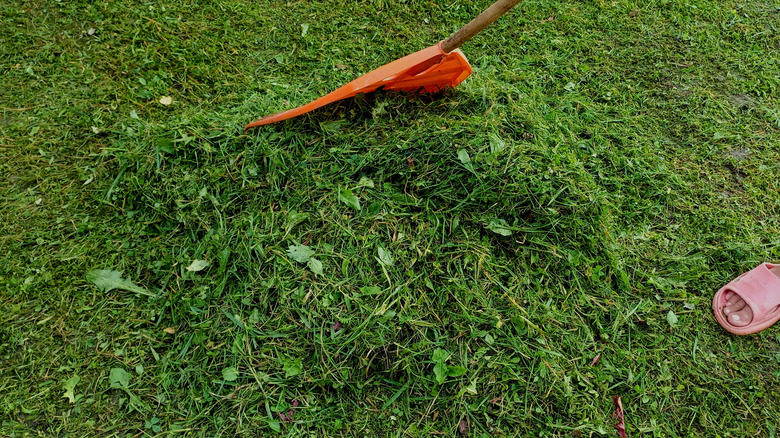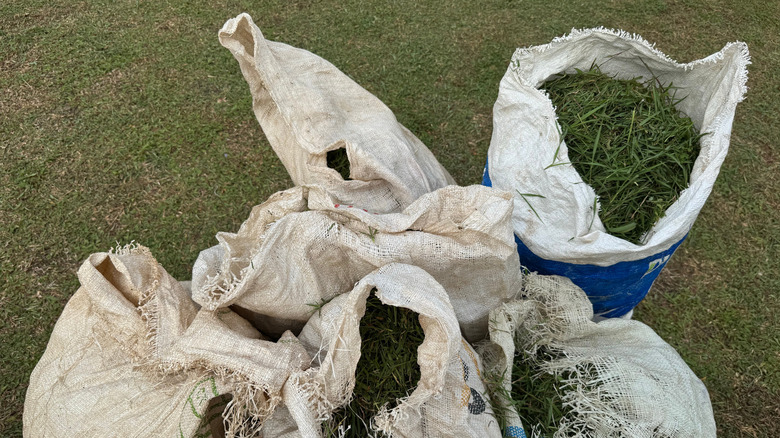Don't Toss Grass Clippings When You Could Reuse Them For A Greener Lawn
You might think of grass clippings as yard waste, but they're anything but useless. In fact, the U.S. Environmental Protection Agency reported in 2018 that leaves and grass made up over 12% of the country's total waste stream, most of which could've gone right back into the yard. These clippings are loaded with nutrients like nitrogen, phosphorus, and potassium, and when handled right, they can supply up to 25% of the potential lawn fertilizer in your garden.
They also help feed soil bacteria that break down organic matter and keep your turf thriving. So instead of tossing them to the curb, it makes a lot more sense to put grass clippings to work. You can compost them, steep them into a homemade fertilizer tea, feed them to your worm bin, or just leave them right on the lawn to break down naturally. All it takes is a little strategy, and your yard will thank you for it.
However, if you used herbicides on your lawn, hold off on reusing the clippings in compost, mulch, or worm bins. Some chemicals can linger and may harm your plants. So, it's best to leave those clippings on the lawn for two or three mowing sessions, and always check the product label for specific guidance.
Compost grass clippings into nutrient-rich compost
The most obvious and arguably most rewarding way to reuse grass clippings is to toss them straight into the compost pile. These green trimmings are rich in nutrients that plants love. They also serve as a food source for beneficial soil microbes, which help break down organic matter and improve nutrient availability.
Pile composting involves layering grass clippings with carbon-rich materials like dry leaves, paper, or wood chips. A general rule of thumb is to mix one part of these dry ingredients for every one or two parts of grass clippings. This balance helps oxygen circulate and supports decomposition. If you prefer a neater setup or just don't want a big pile of yard waste sitting out, compost bins offer a cleaner, faster alternative.
These enclosed systems help hold moisture and warmth, two things microbes love, which speeds up decomposition. They also help keep pests out and your yard looking tidy. Either way, the result is rich compost you can use to feed garden beds or patchy lawn spots. The same principles apply when using clippings as mulch. Start with a dry layer no more than 1 inch thick. Thicker layers can block air and water from reaching the soil, which stresses the roots.
Brew grass clipping tea for liquid fertilizer
It might sound strange, but one of the easiest ways to turn your yard waste into plant food is by steeping it like a giant cup of tea. Grass clipping tea is a quick, homemade liquid fertilizer that gives your plants a nitrogen-rich boost without any fancy equipment or store-bought mix required. To make it, fill a large bucket about two-thirds full with fresh grass clippings, then top it off with water.
Let the mixture steep for about three days, giving it a mix once a day. Once you've let it sit for a few days, pour the mix through a strainer to catch the clippings. The strained liquid becomes a gentle, nutrient-rich fertilizer you can pour around the base of any plants. Container plants especially love the liquid fertilizer boost, since they rely more on you to refresh the nutrients in their soil.
Feed a worm bin through vermicomposting
If your worm bin is already working overtime on veggie peels and used coffee grounds, you might be tempted to toss in some grass clippings too — and you can, as long as you do it right. Fresh green clippings are full of nitrogen, which makes them worm food ... but dumping them in a big pile is a recipe for trouble.
They clump together and start breaking down quickly, releasing ammonia gas in the process, which is a byproduct of nitrogen-rich materials. Ammonia can be toxic to worms and may drive them away or harm the bin's overall health. A better approach is to sprinkle a small amount in at a time, spread in thin layers so they don't create a sticky mess.
But if you want to add more clippings, dry them out first. Once they're brown and brittle, they act more like bedding, adding carbon and bulk to balance out wetter kitchen scraps. When handled the right way, grass clippings can do more than just disappear into the bin. They help extend your kitchen scraps, reduce overall waste, and enrich your compost, all without costing you a dime in fertilizer.
Leave clippings as natural lawn fertilizer
The easiest way to reuse grass clippings is to just leave them on the lawn. This low-effort trick lets you skip the other methods and still feed your grass. The clippings break down quickly, releasing nitrogen, phosphorus, and potassium back into the soil and delivering up to 25% of your lawn's total fertilizer needs. A mulching mower makes this even easier.
It chops the clippings into fine pieces and drops them back down between the grass blades. This helps them decompose quickly and feed the soil without looking messy. Just make sure your mower blade is sharp. A clean cut not only keeps your lawn healthier but also spreads clippings more smoothly across the yard. Clippings should only be left on the lawn when they're dry and not too thick.
If they start to clump (especially during wet or humid weather) they can block sunlight and trap excess moisture, which may damage the grass underneath. In those cases, it's better to collect and remove the clippings until the lawn growth is back to normal. That said, when done properly, grasscycling can reduce both garden waste and fertilizer use while giving your lawn a steady supply of nutrients.
Give extra grass clippings a second life outside your yard
Finally, if your lawn is producing more clippings than you can reuse, don't let them go to waste. Local gardeners, schools, or community garden projects might be more than happy to take extra grass off your hands. But before donating, make sure that your fresh clippings are not treated with herbicides. You can also check if your town or city has a garden recycling program. Some areas offer drop-off spots or even curbside pickup for yard waste. Just be sure to follow local rules for how to bundle and bag it.
Whatever you do, skip the bonfire. Burning green leaves or damp grass can release toxic smoke that may harm your lungs and pollute the air. Tossing clippings into your household trash isn't always ideal either, since it puts more pressure on already overstuffed landfills. If your clippings haven't been treated with insecticides, pesticides, or chemical fertilizers, reusing or donating them is a smarter and sustainable move.
